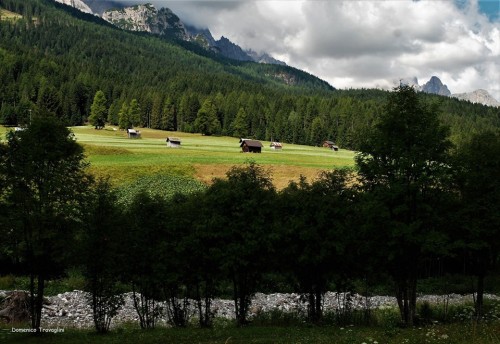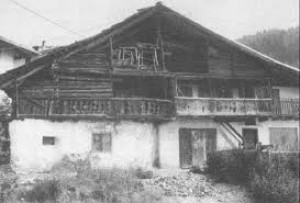
ORIGINS
The Ladin language was born from the Romanization of the Alps in 15 A.C. The people of the Alps before the Roman conquest, defined as "Reti", had already reached a considerable civilization grade since the 5th century. A.C. The noun "Ladino" originated in the nineteenth century. This term refers to the dialects of the Alpine settled during the first millennium after Christ. The linguists Graziadio Ascoli (1829-1907) and Theodor Gartner (1843 - 1925) were the first to use the term "ladino" or "retoromanzo". The Ladin speaking populations are present in di some territories between the canton of Graubünden in Switzerland, the Dolomites and Friuli. Today in the Italian Alps, Alto Adige, Trentino and Veneto, Ladin is still spoken, and the language is recognized as a minority language.
The ladinità of Comelico is accepted and also recognized by the Institutions. Following the national law 482/1999, the Ladin Unions is responsible for the preservation of the language and the cultural promotion.
TERRITORY
The first glottologist who studied the Ladin of the Comelico was Carlo Tagliavini (1903-1982) followed by Giovanbattista Pellegrini (1921-2007). From the linguistic studies to the awareness of the Comelico ladinity the steps have been slow but progressive. A decisive contribution is due to the dissemination of publications and artistic performances in Shreds of evidence of the Ladin people are evident in the agricultural landscape and the rural architecture of Alpine valleys, such as in the toponyms, traditions, traditional kitchen and in the local literary production. A small literary heritage has marked the preservation and enhancement of the Comelico Ladin language in the last thirty years.

SIZE AND REPRESENTATION
There are over than 7,000 inhabitants in Comelico, most of whom Ladin speaking, but there are no reliable figures on the actual number.
The 16 Comelico Rules, the ancient communities of the original families of the valley, decorate their administrative offices and assembly halls with Ladin signs. The 5 Municipalities of Comelico Superiore, Danta, San Nicolò, Santo Stefano, San Pietro, had in their Statutes the definition of “Municipality belonging to the Ladin linguistic minority”. In some municipalities, all councils take place in Ladin. Schools of the valley include the Ladin languange learning in the curriculum, thanks to the support of mother-tongue teachers, and with additional activities, such as theatre and music.
In these years the protection of the language has been stongly carried out by the Ladin Unions. At the provincial level operates the Ladin de la Dolomites Institute, which also publishes a six-monthly magazine "Ladin!". The Ladin Union from Comélgo is based in Costalta.

LINKS
www.gruppofolkilegar.flazio.com
www.youtube.com/channel/UCmw8YZhFFYTMC3WZtcCXD2Q
digilander.libero.it/costalta/proverbi/index.html
www.casamuseoangiulsai.it www.casamuseoangiulsai.it/Costalta_di_Cadore.html
OTHER RESOURCES
De Bolfo V., Ferrario V., Turato A. (a cura di) (2005), Raccolta toponomastica. Carta topografica del territorio, Regole di San Nicolò e di Costa, San Nicolò di Comelico
De Zolt G., Dizionario del dialetto ladino di Campolongo di Cadore, Istituto bellunese di ricerche sociali e culturali, 1986. (http://www.dialettocampolongo.eu/wordpress/)
GRC, Il ladino di Comelico Superiore, Antiga, Treviso, 2008.
Tagliavini C., Il dialetto del Comelico, Firenze, Ed. Olschki, 1926.
Tagliavini C., Il dialetto del Comelico e Nuovi contributi alla conoscenza del dialetto del Comelico, ristampa a cura della Comunità Montana del Comelico e Sappada, 1988.
Union Ladina dal Comelgo Gruppo La baita – Ferruccio Sacco, Mascrade a San Colò – “satire” per carnevale e altri scritti (1943-1964) con una appendice sui carnevali presenti.